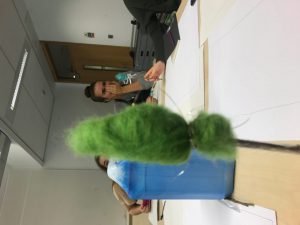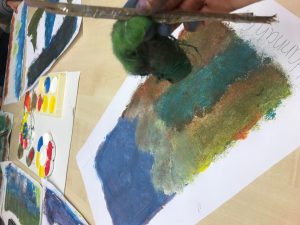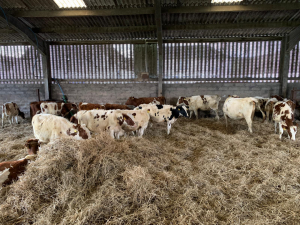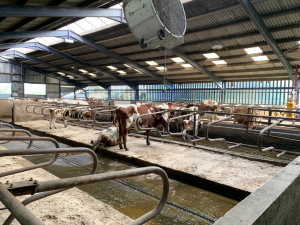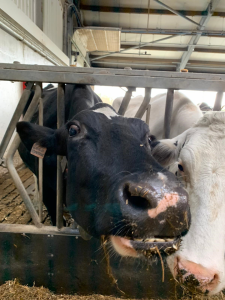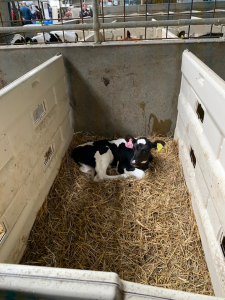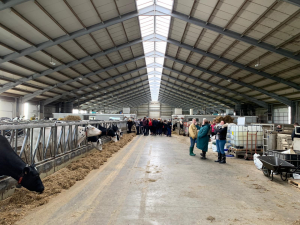During these 2 weeks the focus was on interdependence and what it means. Interdependence is the way that two or more living things rely on each other to be able to remain healthy and grow, for example cows and their farmers are interdependent as the cows rely on the farmer to feed them and give them a safe environment while the farmer relies on the cow for milk or meat to make an income. We visited two farms to give us a better understanding of this (explained further down). Interdependence is split into 3 categories:
- Environmental (the one we focused on) – ideas such as every species has a function to fulfill in sustaining the web of life
- social – ideas such as the worldwide demand for market access
- economical – ideas such as the global market and trading
I have linked a video that I would show a class when teaching interdependence to deepen their understanding of the definition and to allow them a more visual perspective which they may be able to relate to.
We visited two farms on week 5 to widen our understanding of interdependence and to allow us to see it in action. the two farms were very different from each other but both fulfilled the same role, producing milk.
The first farm was Mossgiel Farm, a small organic farm near Mauchline. It was small and made up with 2 sheds for the cows and a family home. It felt welcoming and all the workers seemed happy to be there. The farmer who owned the farm, Bryce, started of by telling us about the farms history and how it had came to be what it was today. He was very passionate when explaining to us about being an organic farm and how his cows are fed grass and allowed to roam the fields. Then we got to see the cow shed and the milking parlour as well as the area where the milk is produced. This let us understand interdepence as the cows eat the grass which helps them produce organic, high quality milk which is then bottled and sent to shops for customers to buy. The customers need the milk to give them their intake of nutrients such as calcium but the cows need the customers to buy the milk or they wouldn’t need to be milked which can cause the cow harm. This farm also seemed very responsible for the cows welfare and allowed calves to have a relationship with their mum and they did not remove their horns to see if they gave the cows more personality, the cows were only milked 1 to 2 times a day. I found this farm very interesting and it gave me a clearer idea of where my dairy products come from and a sense of gratefulness for the work that everyone does to allow us to have these products. I think this is important for me to understand as a teacher so that I can explain to pupils the importance of interdependence and where their food comes from. This would link in with “I have observed living things in the environment over time and am becoming aware of how they depend on each other.” SCN 0-01a, as the pupils could be involved with a trip to the farm to see the processes and interdependence in play.

The second farm was Strandhead Farm, a large technologically advanced farm near Tarbolton. It was very different to the first farm, it was drastically bigger and everything from feeding the cows to cleaning the floors was carried out by robots. The cows were kept inside at all times to make sure they ate enough in order to be milked 5 to 6 times a day. Calves were removed from their mothers very soon after birth and placed in a small pen (image below). I understood the need for the robots due to the larger area and more cows but I didn’t like the idea of the cows not being allowed outside and this definitely gave me more knowledge about where my dairy comes from (which is something I hadn’t really thought about before) and allowed me to think more critically off it which is a UWS Graduate Attribute. the farmer did say that the cows were well looked after and had everything they needed but I think I preferred the more organic approach. An experience and outcome that this visit with pupils could have would be “I understand how local shops and services use technologies to provide us with what we need and want in our daily lives.” TCH 0-07a, as the children can see the technology being used within this farm to produce milk that they can then buy.

I think its important to show pupils the contrasting farming environments to understand interdependence and the different forms it can take as well as broadening their understanding of where their products come from and the different farms that there is.
After looking at the UWS Graduate Attributes and reflecting on this experience, for me as a learner I feel like I gained more knowledge as I didn’t fully understand the term ‘interdependence’ but now I do. It also allowed me to become more of a critical thinker in terms of how the cows were reared and were the food and drinks I am consuming actually come from and what I think is right and wrong. From a teaching perspective I think the skills such as being more knowledgeable and critically thinking are important as a teacher, as well as a learner, but I also feel more ethically aware after the farm visits and I think that’s important in a classroom as it allows for discussion (similar to critical thinking) to what might be right or wrong.
I enjoyed the farm visit and look forward to teaching, in the future, similar ideas to this one on interdependence.


